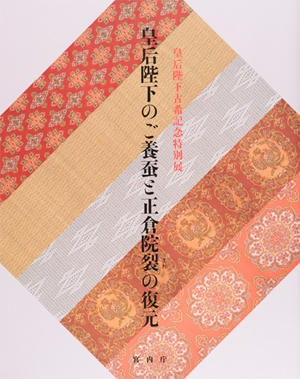| image | information |
|---|---|
 |
The preservation of traditional culture within the Imperial Court can be seen in various facts such as waka poems, and the sericulture of Her Majesty the Empress is one of them. The connection between the Imperial Court and sericulture by the Empress can be traced back to ancient times, in the era of Nihon Shoki (8th century). In the Nara period, the hatsune day of the New Year is the day when the Emperor cultivated his rice field praying for fertility of the land, and the Empress worshiped the god of sericulture by sweeping the silk worm room, as a ritual following the ancient Chinese system. Since then, sericulture has developed into an important industry to create clothing essential for our daily life, along with agriculture. At the present time, sericulture by the Empress has been succeeded since 1871 when Empress Dowager Shoken restored the tradition, and passed it down to Empress Dowager Eisho, Empress Teimei and Empress Kojun. The Empress carefully carries out the process of picking mulberry leaves, feeding the leaves to the silk worms, helping to tend the silk worm while they spin a cocoon, gathering the cocoons, and removing the keba (first thread the worm makes to secure the cocoon). Within the on-going sericulture within the Court, a purely Japanese precious variety called “Koishimaru” has been cultivated continuously. The restoration of Shoso-in textiles has been carried out as a 10 year project since 1994, and it was considered that the silk used for this restoration should be close to that of the silk worm ancestors. After investigating the silk thread produced throughout the country, it was concluded that the fine silk produced by the Koishimaru raised within the Imperial Palace Grounds has the most suitable material feel. Therefore, a request was made to Her Majesty to use this silk, but the production of Koishimaru cocoons at the time was small, and a seven times greater amount was needed for the restoration. Her Majesty complied with the request and increased production. Thus, the Koishimaru thread to be used came for the restoration of the treasures, closely reproducing not only their designs and colors but also the treasures’ other features. The completely restored pieces were exhibited at the Kyoto National Museum last summer, and had a favorable reception. Restoration of the Shoso-in textiles using Koishimaru thread is scheduled to continue. Furthermore, the same thread will also be used in the restoration of the cover cloth of Kasuga Gongen Kenki E (Legends of Kasuga Shrine) which is a picture scroll of the Kamakura era. Her Majesty shows a deep understanding of these projects. In this exhibition, we will show how Her Majesty upholds the traditional culture, and the charm of the ancient textiles created from the sericulture within the Imperial Palace Grounds. |